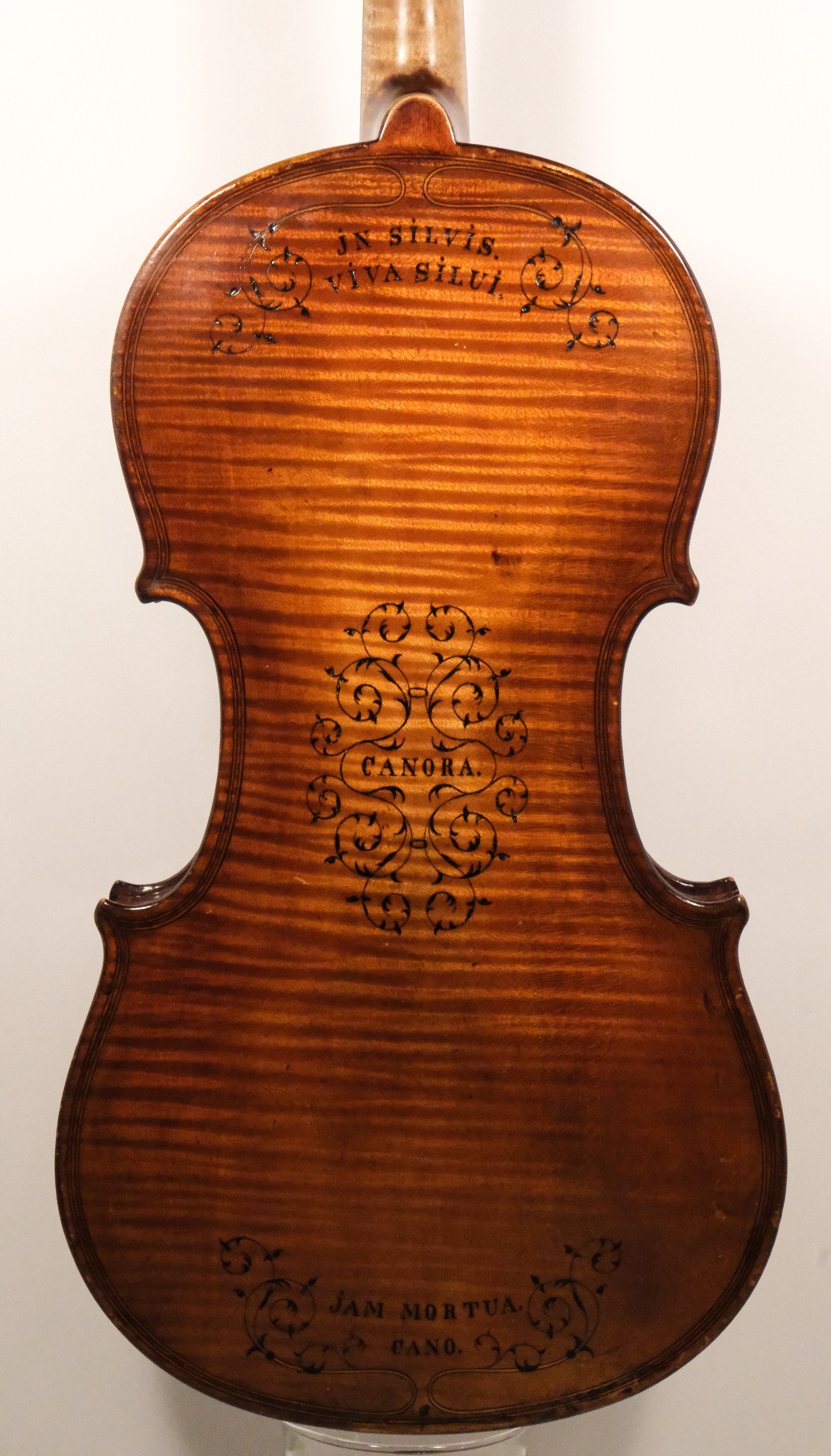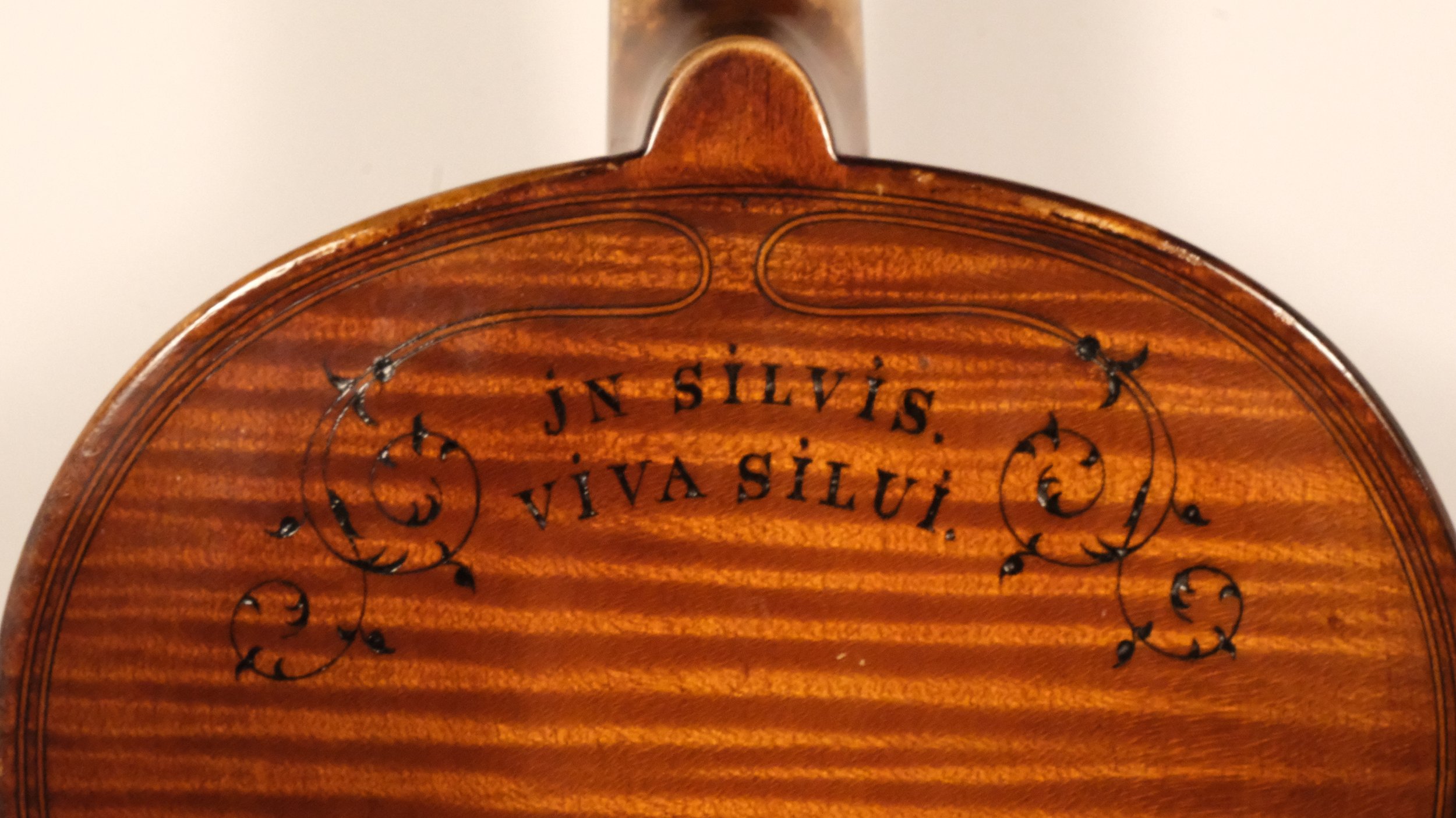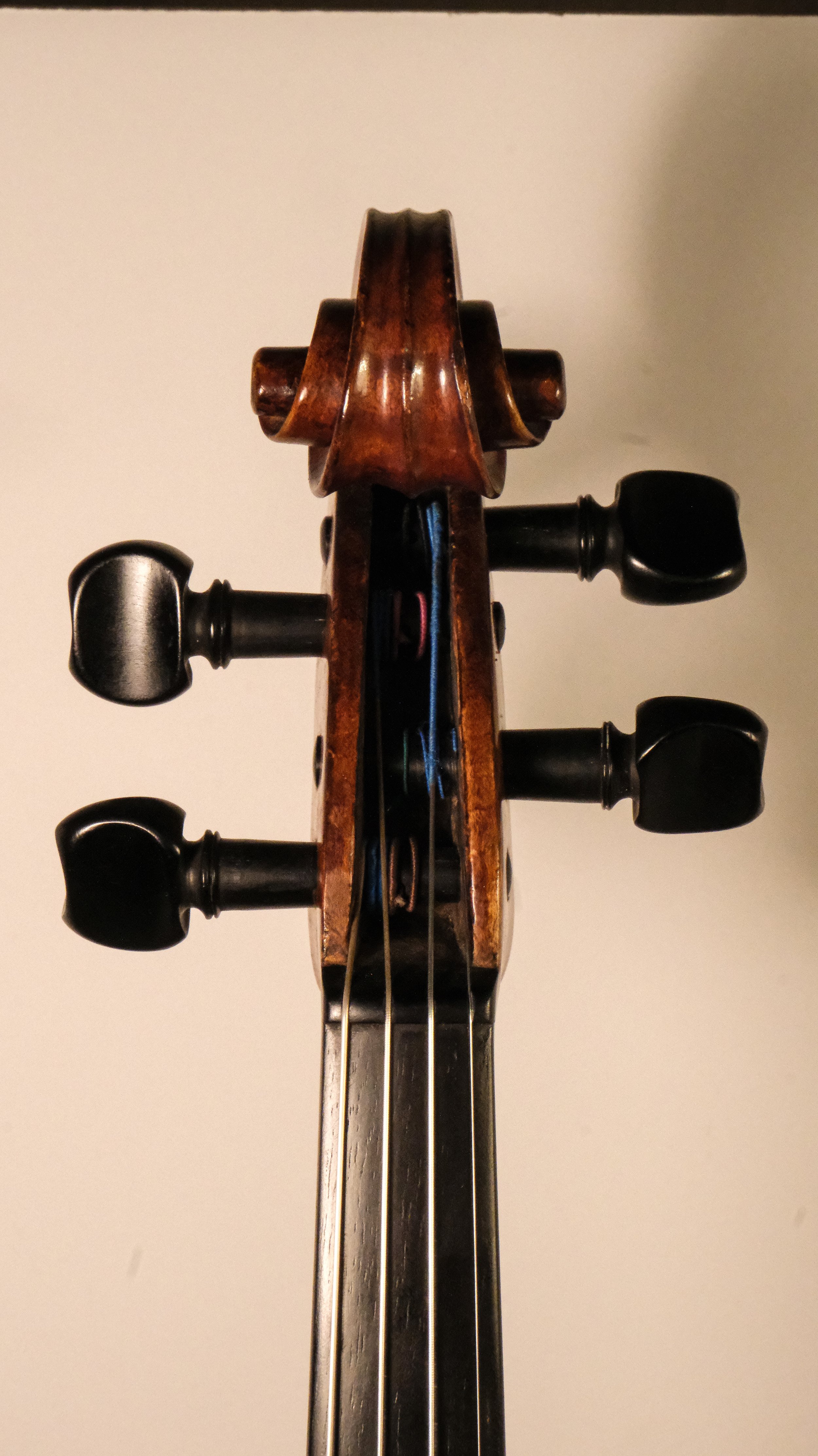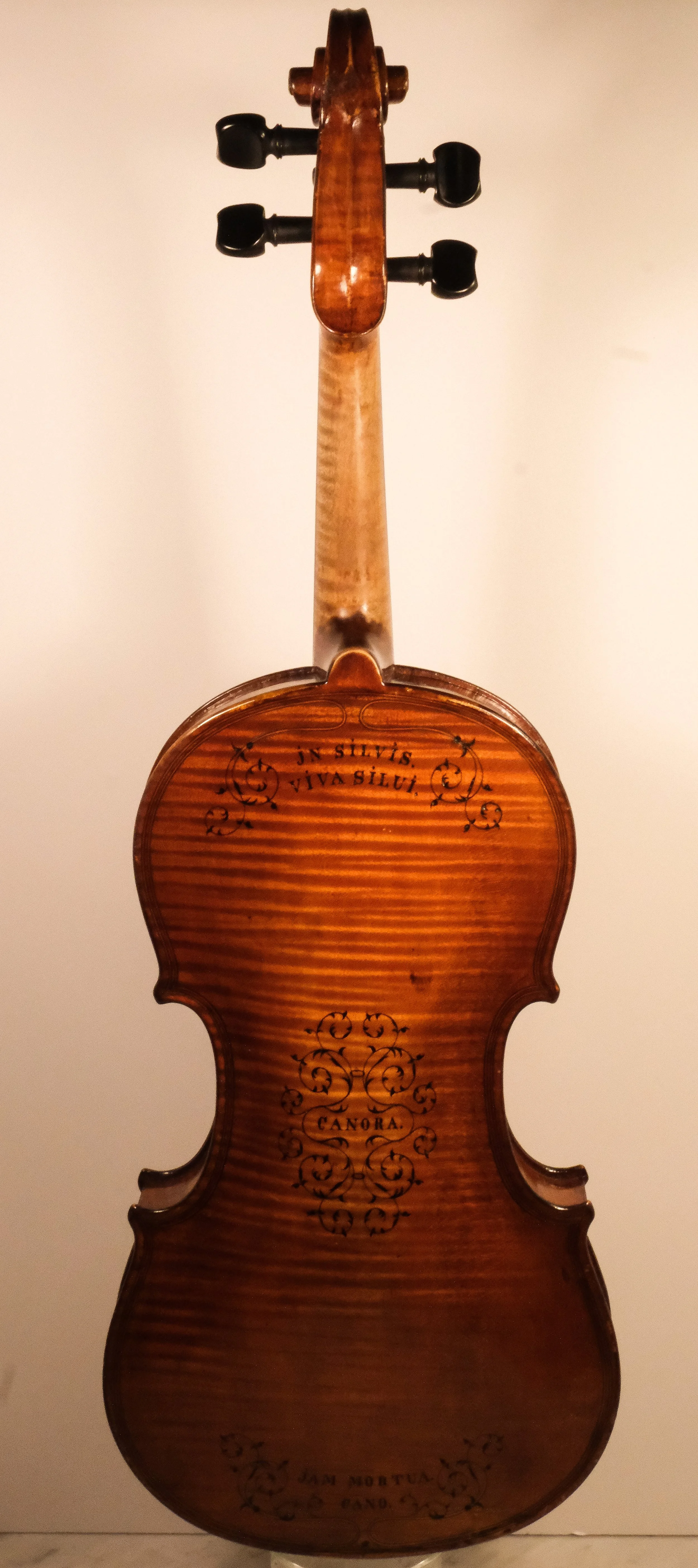 Image 1 of 16
Image 1 of 16

 Image 2 of 16
Image 2 of 16

 Image 3 of 16
Image 3 of 16

 Image 4 of 16
Image 4 of 16

 Image 5 of 16
Image 5 of 16

 Image 6 of 16
Image 6 of 16

 Image 7 of 16
Image 7 of 16

 Image 8 of 16
Image 8 of 16

 Image 9 of 16
Image 9 of 16

 Image 10 of 16
Image 10 of 16

 Image 11 of 16
Image 11 of 16

 Image 12 of 16
Image 12 of 16

 Image 13 of 16
Image 13 of 16

 Image 14 of 16
Image 14 of 16

 Image 15 of 16
Image 15 of 16

 Image 16 of 16
Image 16 of 16

















19th Century German Violin
This is likely a mid to late 19th century German violin of an unknown maker. The top is of spruce, and the back 1-piece maple. It is an exceptional violin, possessing a beautiful tone and displaying excellent artistry. It is one of a kind as far as we know, though there have been others made that were similar to it. The inlaid inscription on the back is a relatively well-known poem or inscription that was somewhat commonly placed on violins, though the artistry on this particular one seems to exceed all others that we have seen. It reads, “IN SILVIS VIVA SILUI CANORA JAM MORTUA CANO.” This meaning something along the lines of, “In the forest, I lived in silence; now in death, I sing sweetly” or “Alive in the woods, I was silent; melodious, now dead, I sing.”
The tone can be described as both dark and warm in the lower register, and bright, even and clear in the upper register. This is the owner’s personal violin, and is in no rush to sell it. Its high cost may be slightly over-appreciated, but it is simply an irreplaceable work of art. It even performed well against a test of much higher-valued violins, and could most probably be used in any professional setting.
This is likely a mid to late 19th century German violin of an unknown maker. The top is of spruce, and the back 1-piece maple. It is an exceptional violin, possessing a beautiful tone and displaying excellent artistry. It is one of a kind as far as we know, though there have been others made that were similar to it. The inlaid inscription on the back is a relatively well-known poem or inscription that was somewhat commonly placed on violins, though the artistry on this particular one seems to exceed all others that we have seen. It reads, “IN SILVIS VIVA SILUI CANORA JAM MORTUA CANO.” This meaning something along the lines of, “In the forest, I lived in silence; now in death, I sing sweetly” or “Alive in the woods, I was silent; melodious, now dead, I sing.”
The tone can be described as both dark and warm in the lower register, and bright, even and clear in the upper register. This is the owner’s personal violin, and is in no rush to sell it. Its high cost may be slightly over-appreciated, but it is simply an irreplaceable work of art. It even performed well against a test of much higher-valued violins, and could most probably be used in any professional setting.
This is likely a mid to late 19th century German violin of an unknown maker. The top is of spruce, and the back 1-piece maple. It is an exceptional violin, possessing a beautiful tone and displaying excellent artistry. It is one of a kind as far as we know, though there have been others made that were similar to it. The inlaid inscription on the back is a relatively well-known poem or inscription that was somewhat commonly placed on violins, though the artistry on this particular one seems to exceed all others that we have seen. It reads, “IN SILVIS VIVA SILUI CANORA JAM MORTUA CANO.” This meaning something along the lines of, “In the forest, I lived in silence; now in death, I sing sweetly” or “Alive in the woods, I was silent; melodious, now dead, I sing.”
The tone can be described as both dark and warm in the lower register, and bright, even and clear in the upper register. This is the owner’s personal violin, and is in no rush to sell it. Its high cost may be slightly over-appreciated, but it is simply an irreplaceable work of art. It even performed well against a test of much higher-valued violins, and could most probably be used in any professional setting.